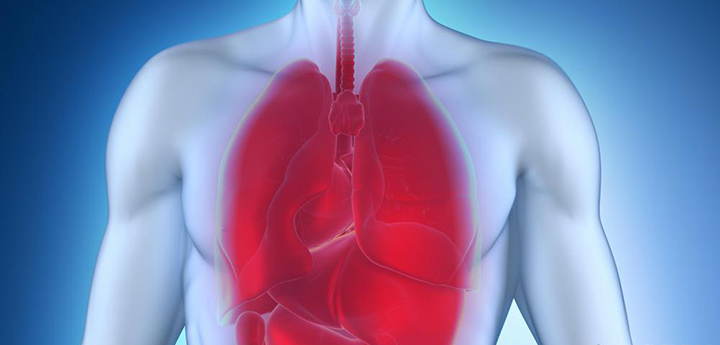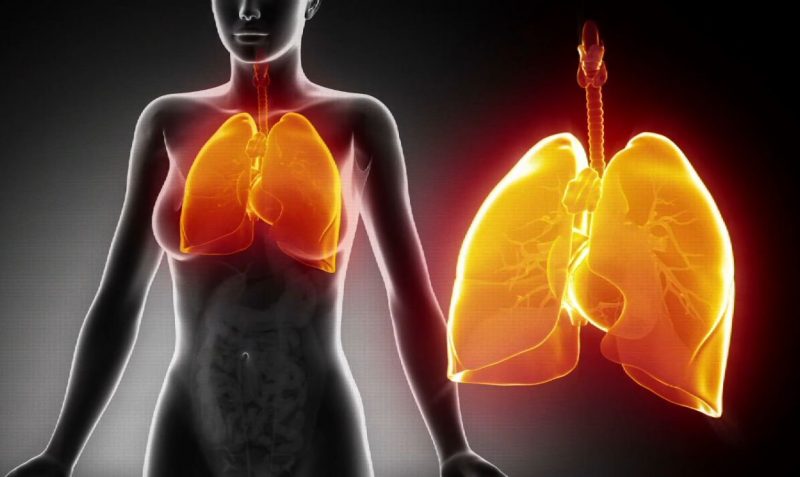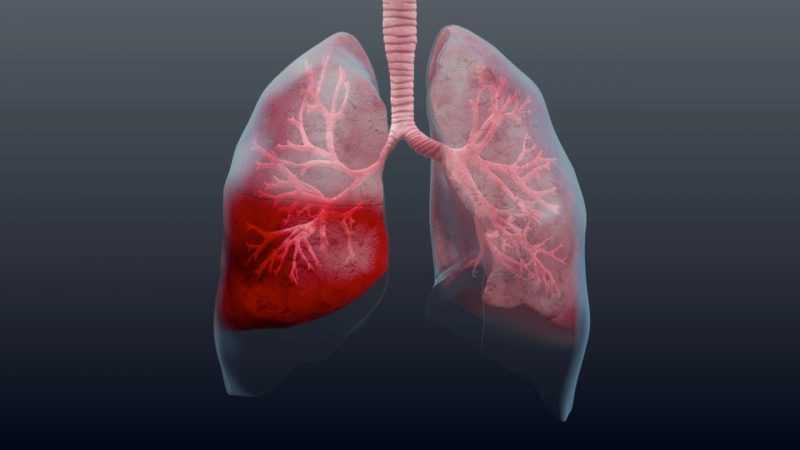Viral pneumonia is the most severe form of the disease, especially if it joins bacterial pneumonia. When such a connection catches up, then there is a sharp danger of complications and even death.
This article will explain what “viral pneumonia" is and how it differs from the other two types of this disease. It will focus on the features of the course of the disease in adults and children, on its treatment with traditional and folk remedies.
Material Content:
Symptoms and signs of viral pneumonia
Inflammation of the lungs caused by viruses can overtake any person: for that he and the virus. However, there are special risk groups that include older people over 65, babies and pregnant women.
The former - due to age-related weakness of the immune system, the latter - because of the danger of losing the baby in the early stages of pregnancy or getting complications in the later stages of gestation. At risk are also patients with chronic diseases for which infections of any type, including pneumonia, are especially dangerous.
Symptoms of viral pneumonia occur after infection, when the viruses descend into the lungs from the upper respiratory tract, and they begin to actively resist them, which causes inflammation of the main respiratory organ. Due to the inflammatory process, less oxygen enters the affected organs, the symptoms of the disease begin to manifest clearly.
Important! This type of pneumonia is dangerous because it is easily transmitted by airborne droplets, that is, you can get infected from a sick person when he coughs, sneezes, and simply by touching the surface with which the patient was in contact.
Sometimes pneumonia can occur after a person is infected with measles, chickenpox. Sometimes it can cause certain types of herpes virus, parainfluenza, adenoviruses, as well as respiratory syncytial viruses.
But what is surprising: if earlier viral pneumonia was diagnosed quite rarely, recently this extremely dangerous disease has become common. The spread in recent years of this particular type of pneumonia is attributed by doctors to type A and B flu, and especially to the appearance of the so-called swine flu (H1N1).
It is thanks to him that viruses penetrate the respiratory tract of a sick person and cause the progression of inflammation. This is a very dangerous combination, which can even cause the death of the patient. And the cause will not be the flu at all, but a complication of the latter in the form of pneumonia.
Here are her symptoms:
- cough - characterized by dryness, then sputum production and paroxysmal attacks;
- fever - severe chills cause fever;
- loss of strength, sometimes not even allowing you to get up;
- sharp, sometimes paroxysmal headache.
In addition, pneumonia can be very much like a cold, so often the symptoms of pneumonia are not seen behind the symptoms of acute respiratory viral infections - shortness of breath, shortness of breath, aching and sore eyes, rales in the sternum, which are clearly audible when listening, can turn blue on the face and fingers.
Due to intoxication of the body due to the spread of infection, nausea and vomiting can also occur.
In children, the symptoms are similar. Although a sick child may differ from an adult patient at that moment also by respiratory failure until it stops, he may have a stomach ache and even briefly experience loss of consciousness with seizures.
Important! Viral pneumonia is characterized by rapid development, so it is extremely important not to deal with the treatment of scrap yourself, but immediately consult a doctor!
The incubation period and pathogens in children and adults
Viral pneumonia in adults sometimes begins imperceptibly or is manifested by a slight increase in temperature.
A typical incubation period in an adult is approximately three days, but may occur later. It all depends on various factors - on a person’s state of health, his age, type of virus, etc.
Viral pneumonia in children also sometimes begins quite unnoticed. And at this moment the patient is very dangerous for others, since the disease is very contagious. Especially when it comes to the disease of viral pneumonia of a baby attending a kindergarten. And an adult, not knowing about his ailment, is already a carrier of the infection and its distributor.

Depending on the type of viruses responsible for the occurrence of diseases, it is customary to separate the types of pneumonia:
- caused by parainfluenza virus;
- cytomegavirus;
- herpes viruses type 1 and 3;
- adenoviruses;
- measles viruses.
Diagnostic Methods
A set of measures, the most important of which is an X-ray examination by means of an X-ray and chest X-ray, is not possible to review the disease and find out the real volumes of involvement of lung tissue in the pathological process. Moreover, observation in the dynamics of the process allows us to distinguish not only the size of the lesion, but also the type of pneumonia (focal, segmental, lobar or croupous).

Serological and virological studies, including blood tests, and sputum examination, which, although it does not confirm the presence of viruses, are necessary to identify the disease, are necessary to detect other diseases (lung cancer or tuberculosis) and differentiate them from pneumonia.
Initially, the doctor conducts listening to the patient’s lungs, after which he makes a decision on other measures.
Viral pneumonia treatment
Therapy, or treatment of viral pneumonia, is completely different from the treatment of bacterial pneumonia. Therefore, timely and correct diagnosis is of fundamental importance.

Traditional treatment
Since it is possible to identify which type is available in a particular case only after analyzing the contents of the patient's pharynx and nasopharynx, when evaluating a special blood test, before the final diagnosis, antibiotic treatment is applied to all patients in the form of initial antibacterial therapy.
Most often these are new-generation antibiotics Azithromycin, Cefuroxime, Amoxicillin. It is believed that mild viral pneumonia does not give rise to hospitalization, and therefore often only infants and people of age are sent to the hospital.
However, it is believed that even mild viral pneumonia should be treated only under inpatient conditions due to the fact that respiratory failure may occur.
If there is a risk of infection, antibiotics are used. At the same time reduce the clinical manifestations of the disease. Antiviral treatment is effective, as modern studies show, only in the presence of the herpes virus, as well as in cases of influenza A and B.
In this case, Ingavirin and other antiviral drugs are prescribed. In other cases of viral pneumonia, antioxidants and interferons are used.
In addition, the patient is prescribed antitussive and expectorant drugs, medicines to lower the temperature, bed rest, heavy drinking, food rich in protein, minerals and vitamins. Physiotherapy with physical therapy and massage helps well.
Folk remedies
Traditional medicine can help. In particular, it shows the use of herbs - agave, coltsfoot, marshmallow, elecampane. They have anti-allergic, anti-inflammatory and soothing effects.
Consequences and complications of the disease

Viral pneumonia in itself is an extremely complex and dangerous disease. Delay in starting treatment can actually lead to the death of the patient. Possible complications are no less dangerous. The latter include sepsis, pulmonary edema, inflammation of the heart muscle, etc. The way a patient comes out of pneumonia to a large extent depends on the correct diagnosis, treatment and the capabilities of the body itself.
Preventive measures
The most effective prevention is timely vaccination. During the epidemic of influenza and viral pneumonia, you should beware of crowded places, and if you have to visit them, then nasal passages should be treated with antiviral ointments.
To strengthen health and immunity, it is recommended to engage in feasible physical exercises and take walks in the fresh air. In the room, the ventilation mode will also protect against the accumulation of harmful viruses.
Healthy and nutritious nutrition, rest will also have a beneficial effect on the state of health. But nevertheless, if it was not possible to avoid the disease, then the first thing to do is to appear to the doctor to determine the disease and prescribe adequate treatment.
Remember, the pneumonia virus is extremely dangerous, it needs competent therapy.













